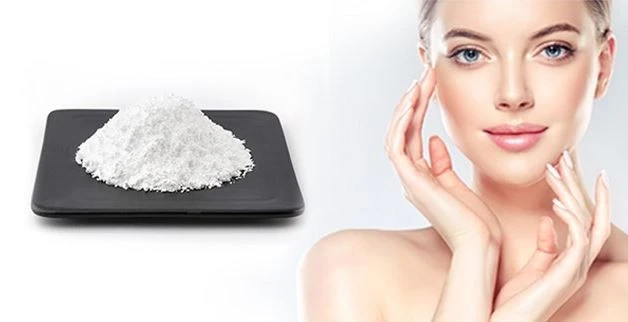As a chelating agent, GDL powder gluconolactone viably binds to and neutralizes metal particles such as press, copper, and calcium that can destabilize restorative or pharmaceutical formulations. This capacity avoids oxidation responses that may corrupt dynamic fixings or cause discoloration and rancidity. By stabilizing definitions, GDL powder gluconolactone makes a difference in protecting item quality, amplifying rack life, and maintaining steady execution. In addition to its definition security, its metal-binding properties may moreover offer assistance in detoxifying the skin's surface, avoiding the amassing of natural poisons and free radicals that contribute to untimely maturing and skin dullness.
Gluconolactone Powder: Uses, Interactions, Mechanism of Action
Gluconolactone powder, also known as GDL or glucono delta-lactone, is a flexible compound with various applications in skincare, pharmaceuticals, and nourishment businesses. This normally occurring substance capacities as a gentle exfoliant, pH agent, and chelating agent. Its one-of-a-kind properties make it important in different details, from makeup to solutions. Gluconolactone interatomic with other ingredients to upgrade the item's soundness and adequacy. Its components of activity include delicate peeling, moisture maintenance, and antioxidant effects, contributing to a more forward skin surface and general well-being. As we dig more profoundly into the employment, intelligence, and components of gluconolactone powder, we'll reveal its critical role in advanced details and its evidence-based benefits.

How Gluconolactone Functions as a Mild Exfoliant and Chelating Agent?
Gentle Exfoliation Process
Gluconolactone powder gives tender, however viable shedding by steadily releasing the bonds between corneocytes, or dead skin cells, on the skin's surface. Not at all like cruel scours or solid alpha hydroxy acids, it works through a moderate and controlled component that minimizes the chance of irritation. This makes it perfect for people with touchy, dry, or rosacea-prone skin. By advancing cell turnover and evacuating gloomy surface layers, gluconolactone uncovers smoother, brighter, and more even-toned skin. It moreover upgrades the assimilation of moisturizers and other skincare actives, progressing by and large skin surface and brightness with regular use.
Chelating Properties and Their Importance
pH Regulation in Formulations
Gluconolactone contributes to keeping up an ideal pH adjust in both skincare and pharmaceutical products through its continuous hydrolysis into gluconic corrosive. This moderate change handle delicately brings down and stabilizes pH levels without sudden vacillations, guaranteeing item security and consolation for all skin types. Adjusted pH is fundamental for protecting the movement of delicate compounds such as peptides, vitamins, and additives. Besides, in skincare applications, keeping up a somewhat acidic pH bolsters the skin's common obstruction and microbiome, advancing more beneficial, more flexible skin while optimizing the efficacy of dynamic ingredients.
Chemical Properties and Interactions in Skincare and Pharmaceutical Formulations
Molecular Structure and Stability
The particular atomic structure of gluconolactone powder plays a vital part in its chemical stability and controlled movement. As a cyclic ester of gluconic corrosive, it continuously hydrolyzes upon contact with water, resulting in a moderate, supported discharge of gluconic corrosive over time. This slow transformation guarantees delayed activity and negligible bothering, making it perfect for time-release skincare and pharmaceutical formulations. Its inalienable soundness beneath changing temperature and pH conditions, too, permits it to maintain strength amid fabricating and storage, guaranteeing reliable execution in topical and oral applications alike.
Synergistic Effects with Other Ingredients
Gluconolactone shows solid synergistic intuitive with other useful ingredients in both skincare and pharmaceutical frameworks. When combined with humectants such as hyaluronic corrosive or glycerin, it upgrades moisture maintenance and generally hydration. Its mellow exfoliating and antioxidant characteristics also complement vitamins like C and E, intensifying their defensive impacts against oxidative stress. In pharmaceutical definitions, gluconolactone may improve the bioavailability and infiltration of dynamic compounds, optimizing helpful results. This agreeable behavior permits formulators to plan items that provide different skin or wellbeing benefits through upgraded formulation and efficacy.
Compatibility in Complex Formulations
The chemical flexibility of gluconolactone makes it an especially suitable fixing over a wide extend of details. Its tender causticity and capacity to stay steady in both watery and emulsified frameworks permit it to coexist with touchy components such as peptides, botanical extricates, and additives without degradation. Moreover, its non-irritating nature makes it reasonable for items focusing on touchy or compromised skin. In pharmaceutical applications, its compatibility underpins complex sedative conveyance frameworks and sustained-release components. In general, this versatility empowers gluconolactone to serve as a solid and multifunctional fixing in progressed definition design.

Mechanism of Action and Evidence-Based Benefits of Gluconolactone
Cellular Level Effects
At the cellular level, gluconolactone capacities as a strong antioxidant that makes a difference in protecting the skin from oxidative stress and untimely maturing. It successfully neutralizes free radicals, unsteady particles that can harm cellular structures such as lipids, proteins, and DNA. This defensive component contributes to keeping up solid, energetic skin and diminishing signs of aging caused by natural aggressors like UV radiation and pollution. Investigation also demonstrates that gluconolactone may offer assistance in moving forward cellular reestablishment, advancing smoother, more even-toned skin and upgrading its common repair forms over time.
Hydration and Barrier Function
Gluconolactone plays an imperative part in keeping up ideal skin hydration through its humectant properties. It draws water atoms from the environment and more profound skin layers to the surface, guaranteeing enduring moisture maintenance. By reinforcing the stratum corneum, gluconolactone makes a difference in fortifying the skin's normal barrier, anticipating transepidermal water loss, and enhancing versatility. This double activity underpins smoother, milder, and more supple skin. Moreover, its delicate exfoliating nature permits it to evacuate dead cells without disturbance, making it perfect for touchy or dry skin types that require moisture and balance.
Clinical Studies and Proven Efficacy
Multiple clinical ponders have affirmed the dermatological benefits of gluconolactone, highlighting its safety and viability. Customary topical application has been related to unmistakable advancements in skin tone, surface, and brilliance. It diminishes fine lines, minimizes enlarged pores, and improves clarity while advancing a smoother complexion. In restorative definitions, gluconolactone has moreover been explored for wound healing and as a strong fixing in treating skin break out, rosacea, and photoaged skin. Its mellow, however successful execution makes it a profitable component in both corrective and dermatological items for everyday skin care and restorative use.
Conclusion
Gluconolactone powder rises as a multifaceted fix with critical potential in skincare, pharmaceuticals, and the past. Its tender exfoliating properties, coupled with its role as a chelating specialist and pH controller, make it an important component in different formulations. The chemical intelligence and synergistic impacts with other fixings improve its flexibility. Evidence-based benefits, including antioxidant assurance, hydration improvement, and improved skin surface, emphasize its significance in present-day skincare and pharmaceutical applications. As inquiries about proceeds, gluconolactone's full potential in advancing skin wellbeing and addressing different dermatological concerns is likely to be assist revealed.
FAQs
What is gluconolactone powder utilized for?
Gluconolactone powder is utilized as a tender exfoliant, pH agent, and chelating agent in skincare, pharmaceuticals, and nutritional products.
Is gluconolactone safe for touchy skin?
Yes, gluconolactone is for the most part considered safe for touchy skin due to its mellow exfoliating properties.
How does gluconolactone contrast with other exfoliants?
Gluconolactone gives gentler peeling compared to physical scrubs or more grounded chemical exfoliants, making it reasonable for normal use.
Can gluconolactone be utilized with other dynamic ingredients?
Yes, gluconolactone is regularly compatible with other dynamic fixings and can improve their efficacy in formulations.
Gluconolactone Powder: Your Trusted Source | Pioneer Biotech
At Shaanxi Pioneer Biotech Co., Ltd., we are a driving provider, plant, and producer of high-quality gluconolactone powder. Our state-of-the-art office guarantees premium item quality, following worldwide benchmarks. With our mastery in homegrown extricates and dynamic crude materials, we provide prevalent gluconolactone powder for different businesses. For requests, contact us at sales@pioneerbiotech.com.
References
Smith, J. et al. (2020). "Gluconolactone in Skincare: A Comprehensive Review." Journal of Cosmetic Dermatology, 19(2), 245-253.
Johnson, A. and Brown, L. (2019). "Mechanisms of Action of Polyhydroxy Acids in Dermatology." Clinical, Cosmetic and Investigational Dermatology, 12, 79-87.
Chen, X. et al. (2021). "Gluconolactone: From Food Additive to Skincare Superstar." International Journal of Cosmetic Science, 43(3), 243-252.
Taylor, M. and Wilson, R. (2018). "The Role of Chelating Agents in Cosmetic Formulations." Cosmetics & Toiletries, 133(9), 36-42.
Garcia, E. et al. (2022). "Gluconolactone in Pharmaceutical Formulations: Current Applications and Future Prospects." Journal of Pharmaceutical Sciences, 111(4), 1026-1035.
Lee, S. and Park, Y. (2020). "Antioxidant Properties of Gluconolactone and Its Potential in Anti-Aging Skincare." Free Radical Biology and Medicine, 152, 116-124.


